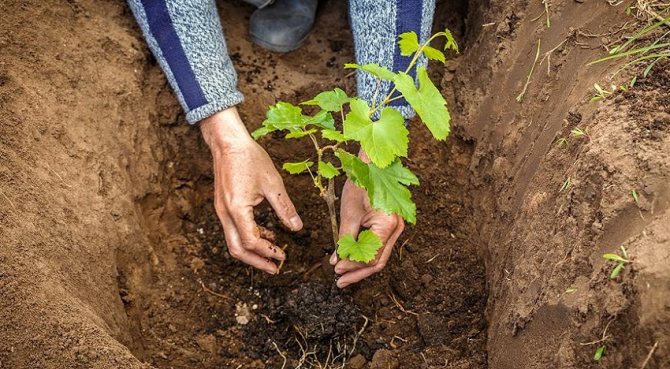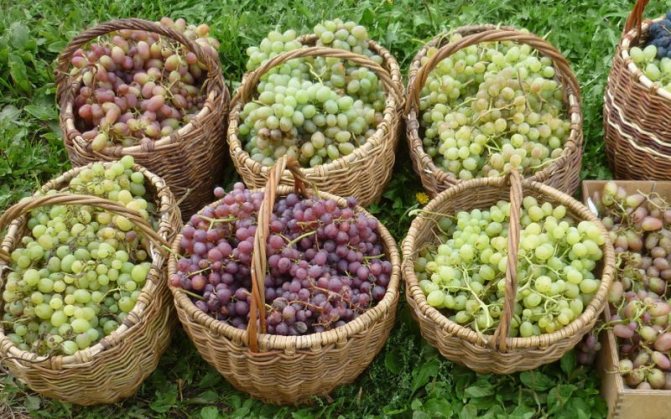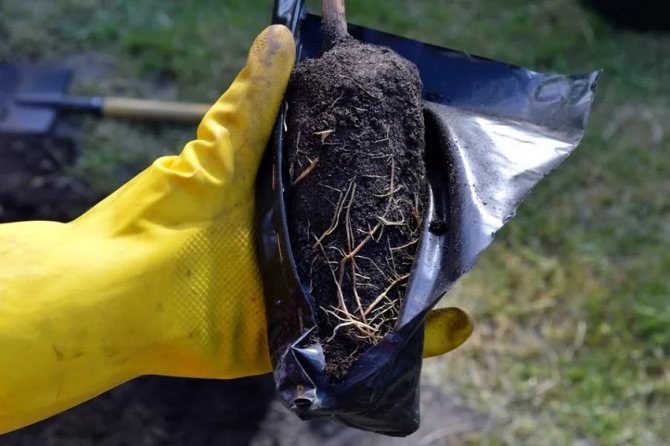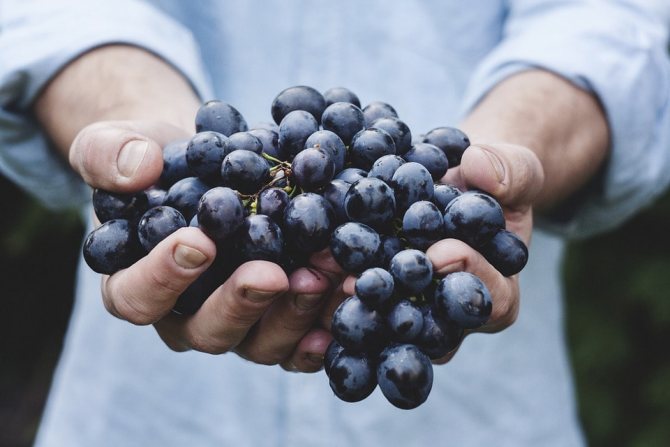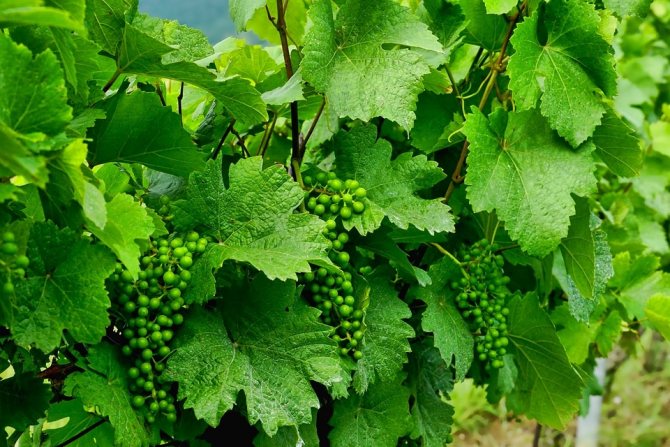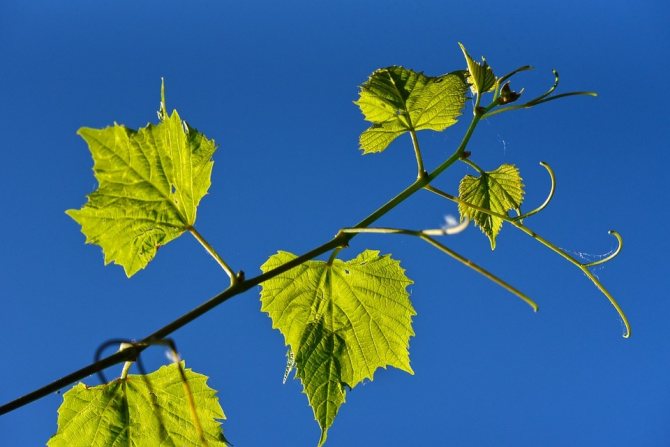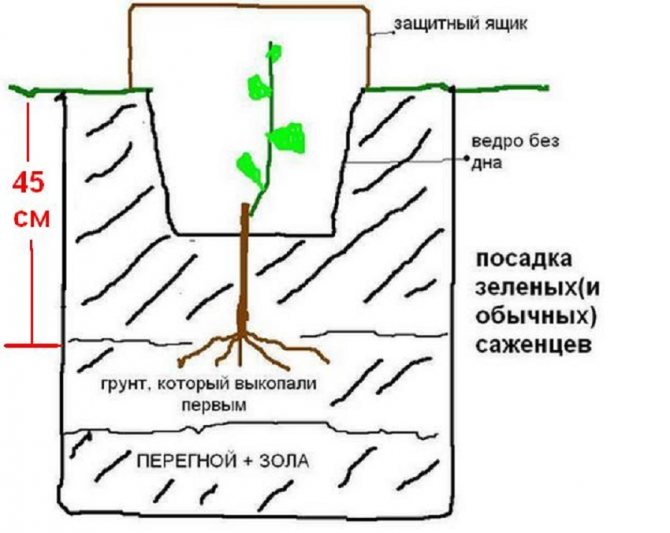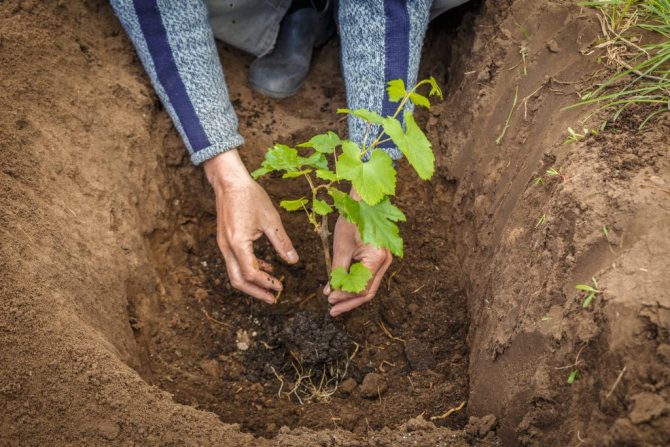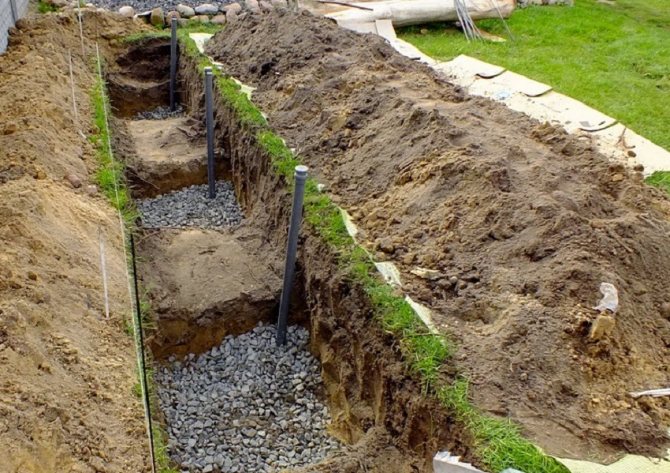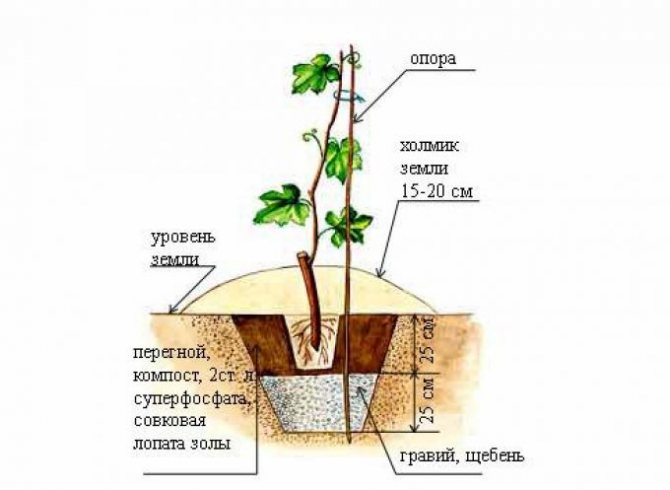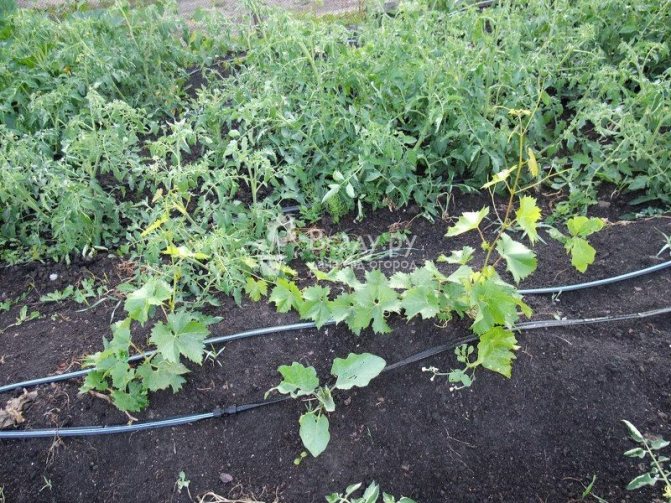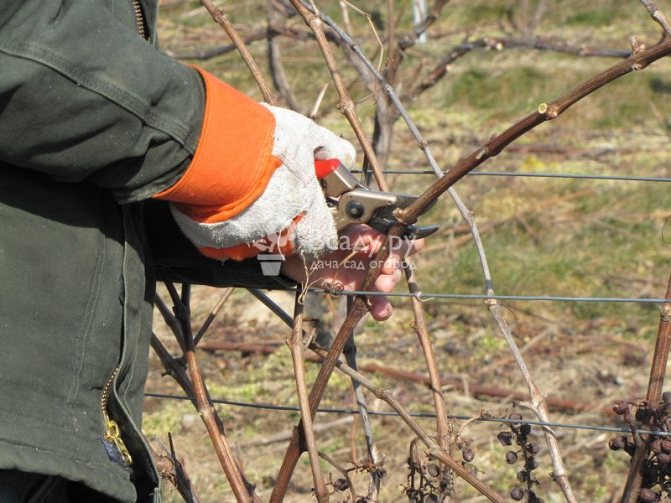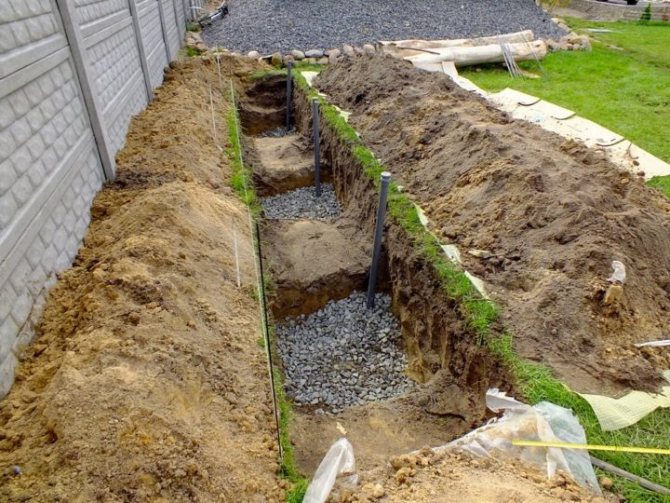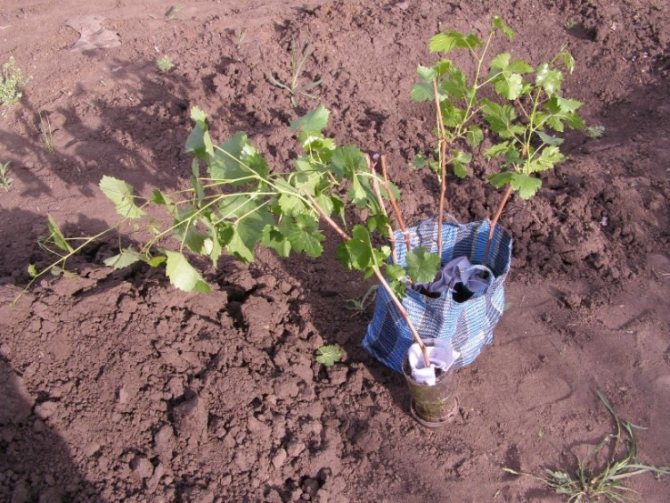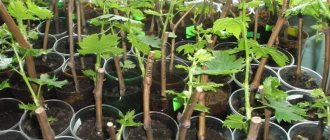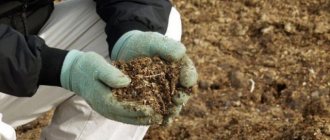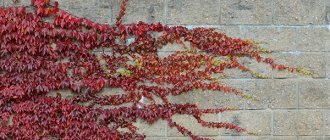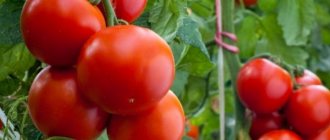The need for a grape vine to obtain various nutrients depends on the growing season.
It is important to feed the grapes during the spring, during the filling of the berries, and also after the harvest.
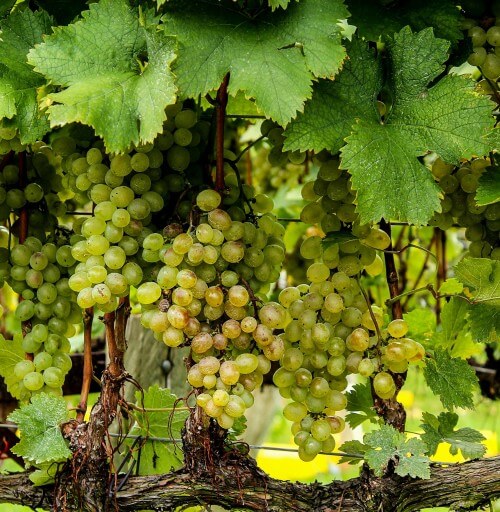
The most important fertilizers for grapes:
Nitrogen
It is necessary in the spring before flowering, during the active growth of leaves and young shoots. In summer, the need for nitrogen decreases along with a decrease in the intensity of shoot regrowth.
In autumn, when grape growth stops, the consumption of nitrogenous fertilizers is minimized.
The main feeding with nitrogen fertilizers should fall on the spring period of budding and the appearance of green shoots. Continue adding nitrogen in the same proportions until about mid-July.
Phosphorus
The element is necessary in the development of all organs of grapes, but inflorescences, seeds, berries and buds need phosphorus to the greatest extent. During flowering, it is imperative to feed the grapes with phosphorus! Experts recommend fertilizing with phosphorus fertilizers at the beginning of flowering and repeating the process in summer.
Potassium
The role of this fertilizer is to prepare the bushes for the winter. Potassium plays an important role in the favorable course of the maturation phase. The need for potassium nutritional compositions increases with the beginning of the autumn period. The best time to feed the grapes with potassium is the end of the summer period and the beginning of autumn.
Trace elements
Despite the fact that they are needed in micro doses, without additional feeding, the yield and quality of the fruits are significantly reduced.
For the favorable development of the vines, you must do:
- Sodium;
- Aluminum;
- Zinc;
- Iodine, cobalt, silicon and other substances.
It is believed that the soil contains these components in sufficient quantities. In most cases, the opinion is wrong. In areas depleted by many years of use, an additional introduction of a small dose of trace elements will be required. How to plant grapes in the fall, read our material.
When to plant grapes in spring and autumn, in what month
So, you decided to plant this berry crop on your site, but you do not know exactly when to plant a grape seedling in autumn and spring, in which particular month? Let's figure it out.
Planting dates in spring
The optimal timing of planting grapes in spring is determined by temperature conditions - the air temperature will be more than 15 degrees Celsius, and the ground temperature will be more than 10 degrees (to find out t, you can simply insert a thermometer into the soil. Choosing when to plant a stalk or seedling, you need to focus on the weather and climatic features of different regions:
- in the South (Krasnodar Territory (Kuban), North Caucasus) the procedure can be carried out in early and mid-April;
- in the middle lane (including the Moscow region) - in the middle of May;
- in the Leningrad region, in Siberia, in the Urals - in late May or early June.
You can also choose the optimal time for the procedure using the 2019 Lunar Calendar:
- The most favorable days are in April: 11, 12, 13, 14, 15, 16, 17, 21, 22, 23, 24, 25, 26 number.
- Unfavorable days: in March - 6, 7, 21;
- in April - 5, 19;
- in May - 5, 19;
- in June - 3, 4, 17.


Planting time in autumn
The most favorable month when you can plant grapes in the fall is October... The event can be carried out from the first days of this month.
By the way! The optimal planting dates in autumn fall on the period when the air temperature is not more than +15 degrees and not lower than +5.
The time for the procedure should not be too late. Do not postpone the event and wait for the eve of the first frost... Otherwise, there is a risk that the seedling will not have time to take root, because of this, the roots may freeze and the young bush may die.
Also, do not carry out the procedure when the temperature drops rapidly. If, nevertheless, it was carried out, then it is necessary to make a reliable shelter for the bush.
Plant grapes in autumn on South possible in the second half of October, even at the beginning of November, at Middle lane (Moscow region) - early, mid-October, in the Leningrad region, in Siberia, in the Urals - at the end of September.


Watering the grapes
Grapes are a moisture-loving culture. The following types of humidification are used:
- Vegetation;
- Moisture charging.
Vegetation irrigation fall in the summer period: after flowering and before the ripening of the bunches. Water volume for irrigation - no more than 800 m3 / ha.
Vegetative watering. 2 furrows are cut in the row spacing, which are filled with water in two stages in stages or irrigated with a small stream. The second way is more efficient.
In both variants, the furrows are immediately covered after the process for better soil moisture.
When is it better to plant grapes - in spring or autumn: advantages and disadvantages
Many summer residents, who have set themselves the goal of rooting culture on their site, ask themselves the question - when is it better to plant grapes, in spring or autumn? This can be done in the first and second cases.
Pros and cons of spring procedure
- In spring, there is no risk of frost, so there is no need to be afraid that the seedlings will die due to negative temperatures.
- In warm conditions, the seedling adapts faster and takes root.
- After snowmelt, the soil is filled with moisture and nutrients.
Disadvantages:
- It is more difficult to find a high-quality seedling of the desired variety (as a rule, they are bought up in the fall, so many growers buy them in advance).
- In the spring, there is already too much trouble, it is difficult to find time for the procedure.
- At this time, not only nature awakens, but also pests, the causative agent of diseases, therefore it is necessary to carry out preventive treatments.
- The risk of age-related night frosts, which can have a negative or even destructive effect on a vulnerable seedling, can never be ruled out.
Pros and cons of the autumn procedure
As for the autumn planting, you should be aware of the positive and negative aspects of rooting at this time:
Benefits of the procedure in the fall:
- the opportunity to choose beautiful, healthy seedlings;
- a wide selection of different varieties;
- when holding an event in the fall, in the spring there is free time for other summer cottages;
- during this period, the land is regularly moistened by rains, which makes it possible to reduce the number of irrigations;
- it is easier for the seedling to take root, since the difference between the air and soil temperatures is small;
- it is believed that the autumn seedling is more hardy.
Disadvantages:
- there is a possibility that the young seedling will not have time to take root and freezing will occur due to the harsh winter;
- a sudden sharp cold snap can not only negatively affect the plant, but even destroy it.
Knowing both the positive and negative aspects, you can choose the most optimal and convenient option for yourself.
Factors Affecting Yield
When choosing a suitable variety, you should first look at the yield class. But it does not always play a decisive role in practice. Yields can be influenced by many other factors. What factors affect the yield:
- Sufficiency of light and heat.When planting bushes in lowlands, on northern slopes, in shaded areas, grapes may be deprived of the necessary amount of light. This fact will certainly affect the yield. The heat-loving nature of grapes has an even more significant effect on the volume of fruiting. The soil and air must be warmed up to the optimum temperatures for a particular grape variety in order for it to produce the expected volume of fruit of the proper quality. The optimum soil temperature for vines is + 28-32 degrees.
- Provision of the required amount of moisture. It is necessary to avoid both insufficient amount of moisture and its excess. Both situations will affect harvest volumes.
- Provision of the whole complex of nutrients and microelements.
- Protection from pests and absence of disease-causing lesions.
- Competent care of bushes (systematic and timely pruning, shaping, etc.).
- Shelter for the winter, frost protection.
- Compliance with the distances between bushes and rows. The more free space "allocated" to the bush, the greater its prospects for high productivity.
How to choose a grape seedling for planting
You should know that there is:
- vegetative seedling - this is stalk (also called shank), which was planted in early spring, and by the time it was planted, leaves had already grown (because of this green seedling).
- Lignified seedling Is a one-year-old bush that was dug up in the fall and left for storage in wet sand in a cool room.
High-quality planting material is the key to good survival, successful cultivation and fruiting in the future. Therefore, in spring and autumn, for planting in open ground, you should choose a grape seedling with the following parameters:
- It should be with a normally developed root system, it should have three to six young roots. The length of the heel roots must be at least fifteen centimeters.
- The plant should have green shoots on the trunk with a length of 15-20 centimeters.
- The optimal length of the seedling is 40-55 centimeters, and the thickness is at least eight millimeters.
- It is also important to examine the kidneys, stem and roots, they must all be healthy, without damage.
Diseases and pests
Every disease or pest significantly reduces the yield. Let's briefly consider the main ones:
- When grapes are affected by downy mildew, the flowers and ovary dry out, with ordinary powdery mildew, the fruits burst and rot.
- Anthracnose and black spot cause blackness and death of the bunches.
- The fruits affected by cercospora turn blue, wrinkle and fall off.
- With root rot, the bush itself dies.
- With gray rot, a fluffy bloom appears on the bunches and foliage. The berries are dropped.
- Of the pests, phylloxera (grape aphid) is very dangerous. It sucks the juices from the roots, the bush dies.
- The felt mite envelops the fruits with felt, the growth of the bush slows down.
- Caterpillars of leaf rollers and mealybugs eat leaves and fruits.
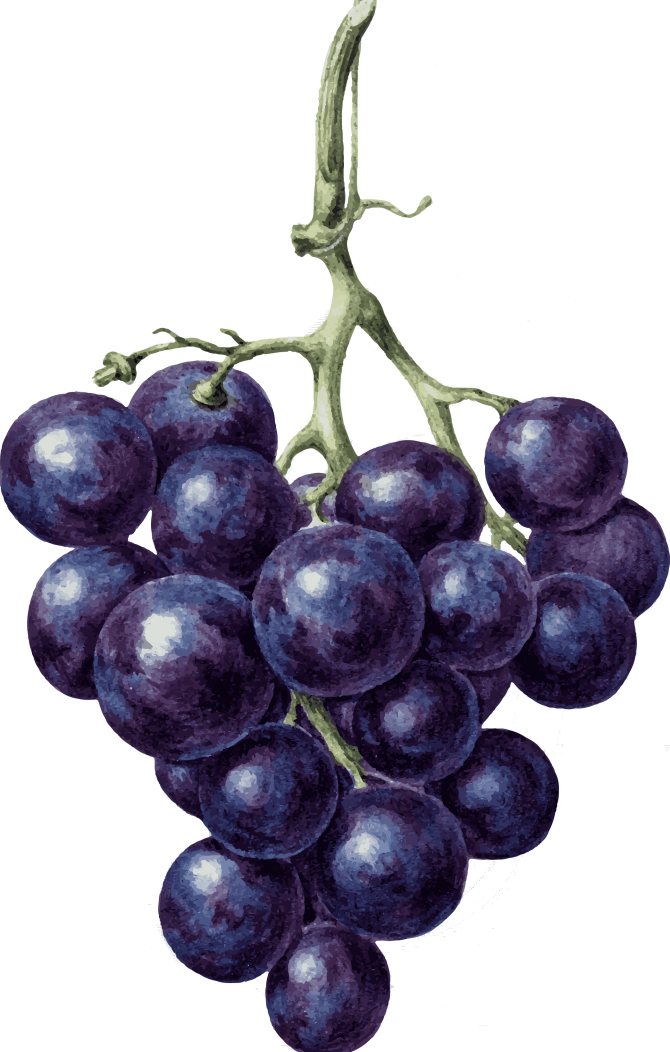

Attention! It is believed that grapes grown in the southern regions are more susceptible to diseases and pests.
Step-by-step instructions for planting grapes in spring and autumn
The technology of planting grapes with seedlings requires taking into account certain nuances and following step-by-step instructions. At first glance, the rules of procedure may be confusing with their complexity and multistage, but in practice everything turns out to be much simpler. But, most importantly, follow the instructions and the procedure for performing the procedure in spring and autumn. Then you can study the necessary information and try in practice.
Choosing the right place
Before starting the event, you need to choose a suitable place in the garden for planting grapes. The success of growing crops and productivity depends on this. Therefore, when choosing a place, you should pay attention to the following nuances and conditions:
- Cultivation on swampy soil and in lowlands is excluded.
- Should not be planted on the north side of the plot.
- A place with strong winds and drafts is unacceptable, especially if the wind is from the north side.
The most ideal option is a place in the garden on the south side, which is fenced with a wall or dense hedge.
- You cannot choose shaded places, for example, if you are too close to trees, buildings, fences.
- You should not choose a place near fruit crops. When planting, the distance between grapes and fruit crops must be at least four meters!
- A very important criterion when choosing a site is the soil. The soil should be fertile, loose, and have good moisture and air permeability. But do not be upset if there is no such land on your site, because you can prepare the soil for planting and create normal conditions for the seedling. If the soil is sandy or stony, then humus should be added to the planting pit, and if the soil is peaty or clayey, then a drainage layer should be added to the bottom of the pit (for example, crushed stone, expanded clay).
Planting pit preparation
The preparation of the pit for planting grapes begins two to three weeks before the event. If you carry out the procedure without preliminary preparation, then the soil will settle and compact over time, because of this, the bush will find itself below the required level.
To properly prepare a pit for planting grapes, you should proceed as follows:
- First of all, you need to dig a square hole: its depth and width should be about 80 centimeters.
- Divide the excavated soil into two parts: one part should consist of the top layer of soil, and the other from the remaining excavated soil.
- A drainage layer is placed at the bottom of the pit (crushed stone, gravel can be used).
- Then you should prepare a dressing for the fertilizer pit: the soil from the top layer is mixed with two buckets of humus, with 500 grams of superphosphate and with a kilogram of wood ash.
- The next step in preparing the soil is to place the fill in the pit. Sprinkle a small layer of fertile soil on top of the fertilizer so that the roots of the plant do not get burned. There should be a distance of about 50 centimeters between the fertilizer and the ground.
- Water the hole generously (if the soil subsides heavily, you can fill the soil to the previous level).
- Let the pit sit like this for about two weeks. During this time, it will settle.
Smart pit: what is it and should it be done
Some summer residents perform a smart pit before planting a grape seedling. What does it mean? A smart pit implies the presence of a drainage layer and the presence of rough for deep irrigation.
To create a pit for planting with a pipe, it is necessary to fertilize the pit as described above, and pour a drainage layer about 10 centimeters thick on top (you can use expanded clay, gravel, crushed stone). After that, you should install the irrigation pipe. Most often, an asbestos-cement pipe is used for this purpose, but it is also possible from other materials, the main thing is that its diameter is 10-15 centimeters. Choose the length of the pipe so that it protrudes ten centimeters above the ground. Place it on the edge of the pit. It is recommended to cover the end of the pipe with a lid so that it does not become clogged and does not serve as a trap for all kinds of living creatures.
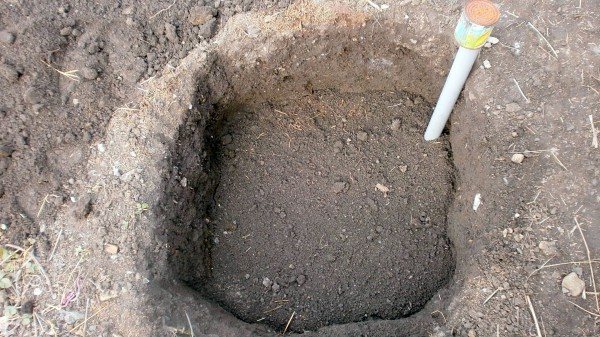

Despite the fact that this technology has fans, its concept is often criticized. According to experienced gardeners, this method of planting grapes has undeniable disadvantages: the drainage layer and the pipe will prevent the growth of roots, and watering through the pipe is often troublesome, and the creation of a smart pit requires unjustified effort and time.
Video: features of a pipe for irrigation.
Seedling preparation
Before starting in spring and autumn to prepare a grape seedling, you must carefully examine it. If you find any mechanical damage, mold, lesions, then, alas, such a specimen is not suitable for rooting.
You can prepare a grape seedling for planting in spring and autumn according to the following scheme:
- It is necessary to boil water and cool. Place the seedling in a cool liquid for about a day. If desired, for soaking, you can use a drug that stimulates the growth of roots (for example, soak the roots in a solution of the drug "Kornevin").
- After removing the seedling from the water, check the roots for damage.
- It is necessary to remove the roots at the top of the seedling, and cut the roots at the bottom by two centimeters.
- Then you should carry out a small pruning of the shoot (leave three or four eyes on it from the base of the shoot).
- Treat the seedling with drugs to prevent diseases and pests.
Direct landing
Planting grapes is carried out according to this scheme:
- Choose a suitable place, prepare the planting hole and seedlings according to the instructions in the paragraphs above.
- Pour a small pile of earth from the top fertile soil into the bottom.
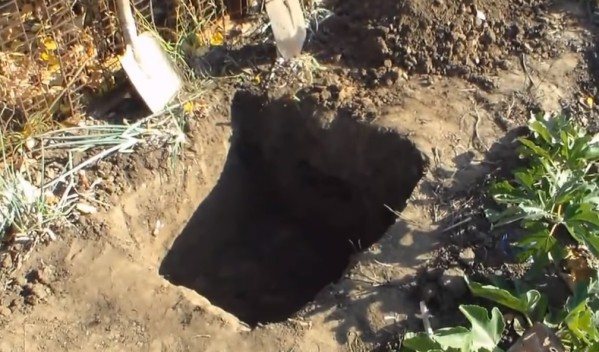

- Carefully place the seedling over this pile and spread the roots. They should be evenly spaced at the bottom of the pit.
- Then you should carefully fill the hole with soil.
- After that, water the planting site with three buckets of water, and if you have several bushes planted, then watering must be carried out under each bush.
- After watering, cover the seedling with a plastic bottle (cut off the bottom of it first). The bottle should be slightly deepened into the ground.


By following these simple step-by-step instructions for planting grapes correctly in autumn and spring, you can successfully root a plant that will give you delicious berries in the future. Even a novice gardener can cope with planting grapes with seedlings on his site.
Recommended distance between seedlings when plantinge - about one or one and a half meters in a row. If you plan to plant a lot of seedlings, it is wise to produce planting future bushes in a trench. Tearly technique requires trench preparation in the same way as in the case of a conventional pit preparation.
Video: features of the trench method.
Industrial vineyards of Ukraine. In search of truth: the best wineries in Ukraine
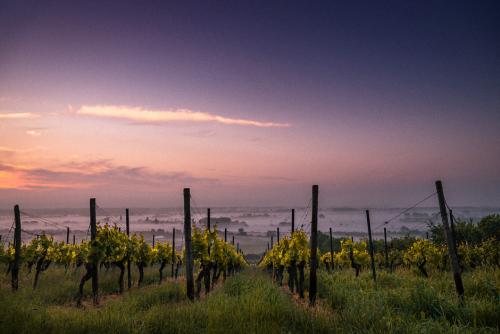

Wine tourism, popular in Western Europe, is beginning to take root in Ukraine. More and more wineries and private wineries are offering guests to get acquainted with the technology and taste the product on site. Our colleagues from the Zruchno.Travel team have carefully studied this area and have prepared a selection of worthy Ukrainian wineries.
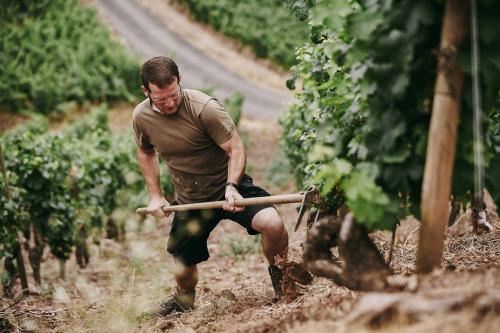

Winery of Prince Trubetskoy
Kherson region, Berislavsky district, Veseloe village
The only historical chateau in Ukraine is located surrounded by beautiful nature on the banks of the Dnieper. During the excursion, you will be shown the vineyards, they will tell you about all the intricacies of growing and harvesting grapes, introduce you to the production process and take you to the ancient wine cellars, which Prince Trubetskoy himself once walked through. Here you can see samples of wine over a hundred years old.
The tasting will offer to try the signature wines of the Trubetskoy Chateau: "Naddnepryanskoe", "Perlina Stepu" and "Oksamit Ukrainy". You can organize a trip to the chateau yourself or book a wine tour at the Tourism and Adventure Center.
Another place in the Kherson region where you can find good wine and learn all the stages of transforming grapes into an elite drink is the house of vintage cognacs "Tavria". It is the largest producer of cognacs in Ukraine with large vineyards - about 1400 hectares of varietal vineyards, located very close to the Askania-Nova reserve. Here you can book an excursion, during which you will be told about the classic technology of cognac production and taken to a gallery where more than six thousand oak barrels and bottles are kept, in which the best cognac spirits are aged.
In the tasting room you will learn the intricacies of cognac etiquette and the basics of tasting. To her are offered wines "Askania Cabernet", "Legend of Tavria", "Emerald", vintage cognacs and collection cognacs.
Family winery "Kolonist" was founded in 2005 in the south of the Odessa region, one of the best Ukrainian wine regions. On the slopes of the largest freshwater lake in Ukraine, Yalpug, grape varieties such as Cabernet Sauvignon, Merlot, Chardonnay, Riesling and others are grown. Using only its own grapes, "Kolonist" produces dry, semi-dry and sweet premium wines. Only from the varieties of Ukrainian grapes, two types of wine are created: Sukholimansky white and Odessa black. The winery staff will gladly guide you through the vineyards, wine-making workshops and wine cellars. After the excursion, you will have a wine tasting and a delicious lunch or dinner from traditional Bulgarian cuisine.
Vin is located in one of the oldest wine-growing regions in Europe. The company was founded in 2003, but the beginning of cultural winemaking in these parts was laid back in the 18th century.
Here, on the site of a modern production complex, the first in Ukraine "Shabo Wine Culture Center" operates. Here you can see the only monument to the Grapevine in Ukraine, the multimedia sculpture "Fountain of Dionysus" and other interesting objects. For tasting are offered dry white wine "Chardonnay Shabo", dry red "Cabernet Shabo", Muscat dessert white wine Shabo, sparkling aged white wine brut Grand Reserve, Shabo Reserve Chardonnay, Grande Reserve Shabo Chardonnay Sauvignon Blanc and other fine drinks.
Grande Vallee is another worthy winery located in the southern region. It produces dry varietal, aged and champagne wines. To do this, eight French and two German authentic grape varieties are grown in the vineyards, carefully harvested by hand and delivered to a modern wine-making complex for processing. Drinks are stored in one of the largest wine storage facilities. The tour program includes excursions to the distillery, located very close to the vineyards, wine tasting accompanied by a sommelier, and in good weather, even relaxing on the summer terrace.
Vin is located in the resort village of the same name and is one of the leading wineries in the Black Sea region. The closeness of the sea, mild climate and a large number of sunny days allow us to grow top quality grapes.
You can get acquainted with the traditions of modern wine production, learn about the intricacies of growing grapevine, visit an art gallery, learn how to choose the right wine for a dish and, finally, taste the best grape wines under the guidance of experienced sommeliers during a tasting tour in Koblevo. The drink you like can be purchased at the company store.
Planting grapes in different regions
Novice and experienced winegrowers are found practically throughout the territory of our vast country. Climatic conditions differ in different regions of the country, therefore, take into account the peculiarities of planting.
In Siberia, in the Urals, in the Leningrad region
Many gardeners find it difficult to grow crops in these regions due to the cold and severe frosts in the winter. However, earlier the successful cultivation of grapes in Siberia, the Urals, the Leningrad region seemed impossible. But now, thanks to the zoned varieties and the many years of experience of summer residents growing crops in cold regions, it is possible to successfully plant a crop with seedlings in autumn and spring and in the future, safely grow and get a harvest. This can be done even for novice winegrowers. The main thing is to observe the following rules:
- For planting in the Urals, Siberia, in the Leningrad region, it is necessary to choose zoned varieties (varieties of early ripening, for example, "Sibrirskaya Cheryomushka", "Thumbelina", "Buratino", "Zagadka"). Otherwise, the harvest will not have time to ripen.
- After planting in the fall and every year, make a thorough cover before the cold weather.
- It is recommended to plant in the spring, not in the fall. Since during autumn planting there is a risk that the seedling will freeze and die.
In the middle lane (Moscow region)
Planting grapes with saplings in the Middle lane (Moscow region) is carried out very often. Due to climatic features, it is better to choose varieties that are unpretentious and frost-resistant.
It is better to start planting and growing crops in the Middle Lane with early-maturing varieties. This is especially true for novice gardeners.
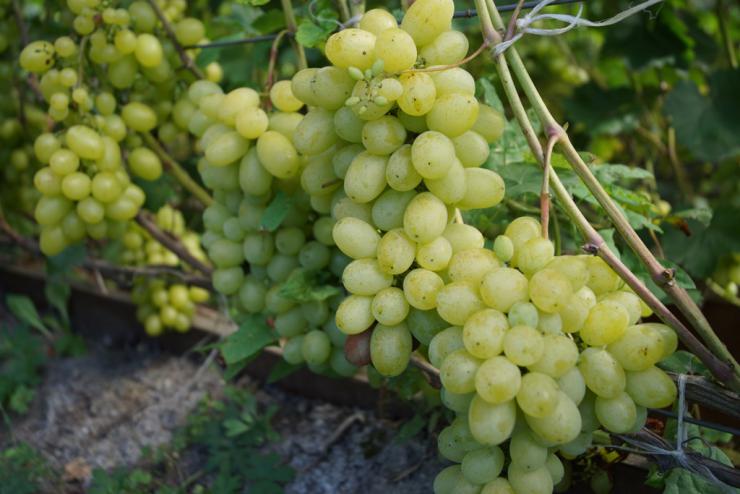

Varieties and their general productivity
The main characteristic of the variety is its yield. The description of any variety indicates to which category it belongs: to low yielding, medium yielding or high yielding.
The most productive varieties: Arcadia, Athos, Byzantium, Gourmet, Kishmish and other varieties with a bunch weight of 1 - 2.5 kg. On average, 10 - 25 kg of fruits are harvested from a bush.


Low-yielding varieties yield up to 5 kg per bush, medium-yielding varieties - 5 - 9 kg.
How to care for a grape bush after planting
After planting in the open field, the grapes have a particularly strong need for timely and regular care. It will help the plant quickly adapt to new conditions, stimulate survival and accelerate fruiting.
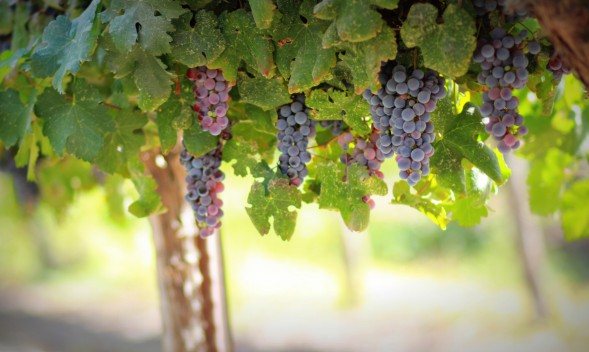

In the first year after planting the shrub, the following measures must be included in the care:
- Watering... In order for the vine to take root normally in the open field after planting, it is very important to water it correctly. But it is not recommended to do this too often; it is enough to water it once a week.
- Shelter... In the first year after planting, it is very important to cover the vines in the fall before the winter cold, however, this should be done in the future. Often, ordinary soil is used for shelter: it is necessary to dig a trench next to the seedling (depth about 20-25 centimeters), carefully lay the shoot in the trench, sprinkle it with earth, and deepen the pegs into the ground, which will help to recognize the place of shelter. A couple of layers of film or tarpaulin are laid on top. This method is more suitable for the southern regions and the Middle Belt. You can also cover without using land: lay the shoots on sawdust, hay, cover the top with a material that does not allow moisture to pass through (polyethylene, tarpaulin), the material should be fixed with staples or something else.
- Loosening... It is especially important in the first year, because thanks to it, air and moisture are better supplied to the roots of the plant. Loosening should be done carefully to avoid damage to the roots.
- Garter... In the spring, it is necessary to tie up the shoots of the plant to the trellis. The garter should be carried out until the moment when foliage and new shoots begin to appear. Thanks to the correct garter, you can increase the amount of the crop, prevent damage to the vines by diseases and pests, and it will also be more convenient and easier to deal with the formation of a bush.
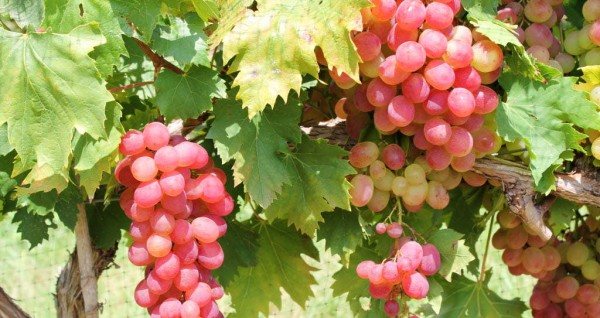

Growing grapes is a noble and rewarding business. Isn't it wonderful to watch the sunshine, sweet berry ripen, and then enjoy its taste with all your family and friends? To know all these joys, it is necessary to make the correct planting of the vine in the open ground in spring and autumn. Hope you found this article helpful!
Subtleties of care
How many years does a vine live? The term depends on the care of the shrubs. An excess amount of water leads to numerous gains, and there is no longer enough strength for the formation of fruits. If the vines do not ripen, the buds will freeze in winter. Insufficient watering also negatively affects the well-being of the grapes, and therefore it is recommended to observe moderation.


Grape seedling
When to water tomatoes after planting
Various fertilizers can be applied during watering. The most commonly used mineral and organic feed. Organic matter is applied every 3 years, as well as phosphorus and potassium. In the spring months, they are limited to compost, and with the onset of autumn, manure is introduced.
Important! In the spring, it is recommended to feed the grapes before the winter shelters are removed from the bushes.
For plant health during the growing season, fertilizing is applied three times:
- the first time in the spring months before flowering begins;
- the second time, so that the ovaries form well before the formation of flowers;
- the third time before the fruits begin to ripen.
The scheme of planting grape vines in open ground
In a classic vineyard, the vine is planted so that the shadow from the adjacent line does not fall on the plant. The strip between the rows is chosen so that there is access to the plants from all sides. The grapes require constant maintenance and pruning.


Watering seedlings when planting
If the groundwater is close to the site, a drainage system must be made to drain the excess. The average water level of 2.5-3 meters is considered favorable.
The distance from the boundaries of the site should be 2-2.5 meters, from tall trees 6-8 meters, from shrubs 3-4 meters.
When laying a plantation in a row, it is recommended to take an interval of 2.5-3 meters.
Planting cuttings
In the spring, grapes are planted with cuttings. A difficult method, but widespread among gardeners. Painstaking preparatory work awaits the summer resident. In the fall, cuttings are cut for planting.


For a day, the plant is placed in water, treatment with copper sulfate in the form of a solution is waiting for the plant. The place of the cut is filled with a wax composition. Storage takes place until spring. Rooting in containers in spring is done in plastic bottles.
The cuttings are kept indoors. When the first leaves appear, the cuttings are taken outside.
The plant is hardened, becoming suitable for growing outdoors. When new shoots appear, the grapes are planted in the ground. When the cutting is placed in the soil, the lower buds should not be damaged.


Planting pit preparation
The gardener dugs a hole 1 meter in diameter, 70 cm deep, with the density of the cover, a drainage layer must be made. Broken bricks or tiles are taken and placed in a pit.
Sand from the river is added to the peat compositions. Top dressing takes place with compost mixed with charcoal and rotted manure. The fertile layer will complete the pit.
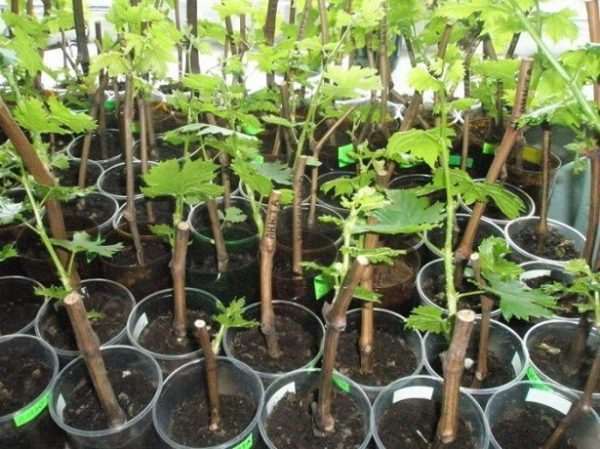

Trellises are laid from south to north, which will ensure the flow of the sun. The wire is stretched at a height of 50 cm from the surface of the earth, the next layer will be in 40 cm.
When planting in sandy soil, you must follow the rule of laying clay on the bottom of the pit. A lump of clay will resemble a castle; the material is laid like a saucer.
This layer retains water, and nutrients remain in the pit, supplying the grapes.
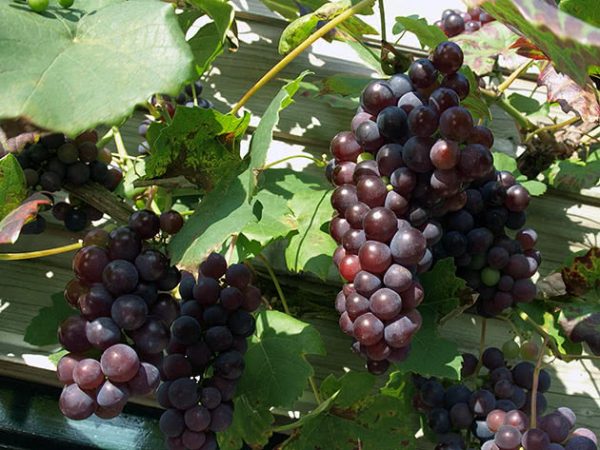

Winegrowers reviews
Evgeny-Moscow
Based on my experience, I can advise you to plant the following grape varieties that are optimal for the Moscow region - Solaris, Crystal, Rilines pink sidlis, GF No. 342, Amur varieties and GF, Donskoy Agat, as well as the Marquette variety that has become popular.
Kolya
Only Krasa Nikopol, Elegant, XVII-10-26 (over early red muscat), Delight, Russian early from the list can suit you.
Preparing for winter
After pruning, the vine is treated with a 3% solution of copper sulfate to protect the grapes from infection in winter. Only ripe vines are left for wintering. They can be distinguished by their brown color, they are thickened and covered with bark. Remove young shoots from the vine so that they do not take nutrients from the bush during the wintering period.
When the temperature drops to -5 degrees, the grapes need to be covered. After pruning, the vine is tied and bent to the ground. The covering material must be prepared in advance so that it can be used at any time.
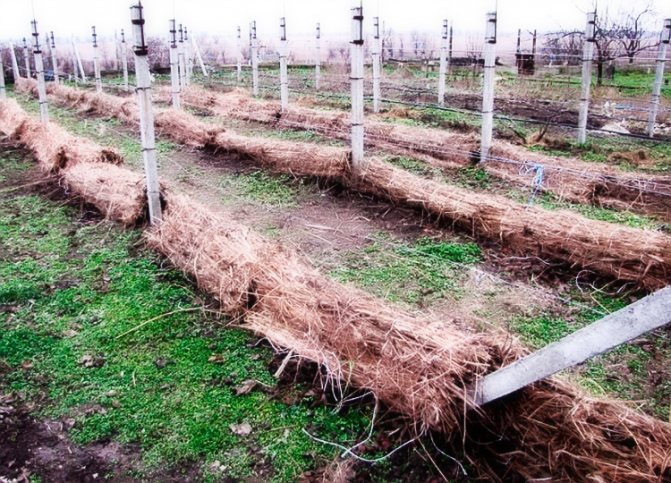

To cover grapes, you can use:
- polyethylene;
- synthetic fabrics;
- pine branches;
- straw.
It is not recommended to cover the grapes early, as this is fraught with the development of fungal diseases, and the eyes can also sprinkle.
If care was taken throughout the season and the grapes were properly covered for the winter, then a good harvest can be expected in the next season.
Errors
At first time
To get the first harvest, great importance is attached to pruning and shaping the bush. to correct the correct load on the vine. The bush quickly grows overgrown with excess green mass and young shoots, which consume 90% of the nutrients. The size and quality of the bunches will decrease, and the harvest will be poor.
If all growth points are cut off on the shoots (all stepchildren are pinched), wintering points begin to grow, which should bear fruit next year, then next year the harvest will be poor.
With frequent and abundant watering, the green mass will begin to grow actively, the ripening of the bunches will be delayed, and the sugar content of the fruits will decrease. therefore in the second half of summer, when the berries ripen, watering is reduced.
Generally
If the grapes are planted on the north side of the house or in the shade of trees, then the vine will reach for the light, the bush itself will grow weak, rare flowers will crumble and there will be no harvest.
In a seedling with a shallow planting, the roots will freeze in winter, and dry out in summer.
When the leaves dry, do not use abundant watering, this symptom could be the onset of a disease or a lack of nutrients. You need to understand the reason and eliminate it.
Planting grapes in the garden is not difficult even for an inexperienced gardener. The main thing is to comply with the necessary rules of agricultural technology. Their further growth, quality and quantity of the future harvest depend on how comfortable the planted bushes will feel.
What to plant
Planting material is cuttings or seedlings (rooted cuttings). Saplings or cuttings are of two types:
- Vaccinated;
- Own-rooted.
In those areas where the soil freezes deep and there is a risk of frost damage to the roots, the planting of grafted seedlings is practiced. Also, this type of planting material is used in places where the soil is infected with phylloxera. If the weather conditions are favorable, the winters are not too cold and the soil is free of phylloxera, native-rooted grapes are cultivated. You can plant an already blossoming and strong seedling, or you can also plant a cutting, which will begin its growth directly in the open field.
Grafted seedlings are much more resistant to low temperatures and some diseases.
Cuttings (shanks)
Growing seedlings from cuttings is perhaps the main method for propagating grapes. This is a fairly simple method that even a novice gardener can handle. The most important thing is to get the stems of the variety that you would like to plant and know how to germinate cuttings correctly. In autumn, when the leaves fall off, but even before frost it is necessary:
- Cut from the vine of your favorite grapes cuttings with a diameter of at least 5 mm with 5-7 buds;
- Treat them with a solution of 1% copper sulfate to destroy disease spores;
- Soak for one to two days in water;
- Dry in the fresh air until water droplets disappear and put in a plastic bag, into which, if possible, pour sawdust.
- Storage temperature 6-7 ° C, humidity just below 100 percent.
In the spring, the saved cuttings are kept in water for some time until the roots appear. Then they are planted in open ground.
Graft
It is advisable to vaccinate in the spring. Of course, each term has its own rules according to which this operation should be carried out. What does the vaccine give? This manipulation allows you to make the grape plant more resistant to various diseases and pests. In addition, grafting makes it possible to get completely different varieties on one root system. With this manipulation, you can rejuvenate the grapes. To develop new varieties with improved taste.


Grafting options for grape cuttings.
Grafting grapes is a rather complicated procedure that requires some training and skills.
Layers
Propagation of grapes by layering is a fairly simple method and has been known since ancient times.The advantage of this method is that you can easily renew an old vine bush, grow new seedlings or fill an empty space with a new plant next to the mother bush.
Any healthy and sufficiently developed shoot is selected in the vineyard. A small groove 10-20 cm deep is dug for it. Then the shoot is laid in it, fixed with wire brackets and sprinkled with earth and humus on top. The end of the vine must remain above the ground. It must be strengthened by tying it to a support. Further, the vine planted in the groove must be watered with water, having previously dissolved a small amount of manganese in it. Up to slightly pink. When the shoot has a full-fledged root system, it can be separated from the mother tree.
In the hot season, the layers must be watered at least three times a month.
Selecting a place for disembarkation
Gardeners choose juicy fruits, which contain a lot of solar energy, and the colorful appearance attracts and stimulates the appetite. Growing grapes is like art.


The place is being prepared in spring, in mid-April you can begin preparatory work for planting grapes. There are cases of preparation in the summer, in June, in the fall, in October, before frost. The work is carried out 1.5 months before the start of the preparatory stage in the form of selecting the right place.
The plot is chosen sunny, on the south side near the fence. A lot of sun rays should feed the plant. At night, the heated fence surface will heat the grapes. Any soil is suitable for planting, but salt marshes should be excluded. The proximity of groundwater will negatively affect growth.
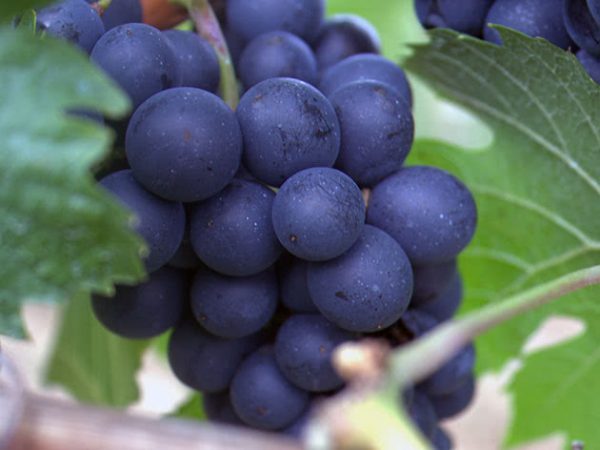

Planting rules
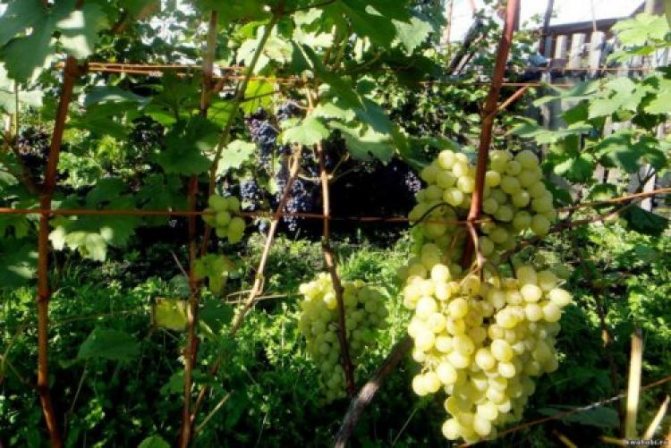

First you need to carefully examine the seedlings. They should be free of incomprehensible stains, mechanical damage and signs of drying out. The height of a healthy seedling reaches no more than 50 cm, and there are also 3 well-developed roots. It is recommended to buy grape seedlings from shops that provide a quality guarantee.
It's important to know! It is necessary to purchase seedlings in containers - they take root faster.
However, grapes can also be grown from cuttings. In this case, there are two options for planting a crop.
Planting a long vine
To plant grapes with a vine, you must follow these steps:
- The vine must be soaked. The height of the cutting should be about a meter long.
- A pit is being prepared, in which there should be drainage, as well as an irrigation pipe.
- The prepared vine is twisted into a spiral and laid in the ground.
- The plant is covered with earth mixed with fertilizers, compacted and watered well.
Grapes "Moldova", variety description
As soon as the water is completely absorbed, the hole is completely filled up. A kidney must be left on the surface, which must be sprinkled with earth so that a small mound is obtained. Thanks to this planting option, the culture develops a strong root system and the bush bears fruit much faster.
Arc landing
This type of planting is suitable for varieties that do not take root well:
- A vine about a meter long must be prepared in advance and wait for it to ripen.
- Then you need to bend it and put it in a prepared hole.
- Fill in half with earth, tamp, water and completely fill the hole.
It is necessary to leave jackdaws along the entire length, since the root system develops at all nodes.
If you plant a bush with an arc up, then it will have two different roots and a common top. A downward arc landing is also possible. However, this will require more cuttings.
There is never too much harvest?
Perhaps one of the main problems of gardeners is the desire not to harm the bushes by excessive, "bare" pruning and at the same time to collect the maximum yield. Say, the more shoots I leave, the more berries I will collect. Alas, this is not the case.The vines cannot support the weight of the juicy bunches, they weaken, cease to resist disease and wither in winter.
There is no universal recipe, since all varieties are different, as well as the age of the plants, growing conditions and climate. The length and number of fruiting branches must be adjusted by pruning. So, with a short pruning, 4 buds are left on the shoot, with an average - 5-10, with a long one - more than 10 eyes.


In exceptional cases, up to 100 kg of berries can be harvested from one grape bush
Pruning
Pruning is carried out throughout the season, in spring, summer and autumn. The main task of the procedure is to form a strong healthy bush that can yield crops and withstand frosts.
For this, secondary shoots - stepchildren are removed and shortened. Do the same with extra inflorescences, bunches and foliage. Thus, nutrients are used for the development of the main shoots and for the formation of a powerful root system, and not for the development of green mass.
Attention! Pruning should be done with clean and disinfected agricultural tools to avoid contamination.
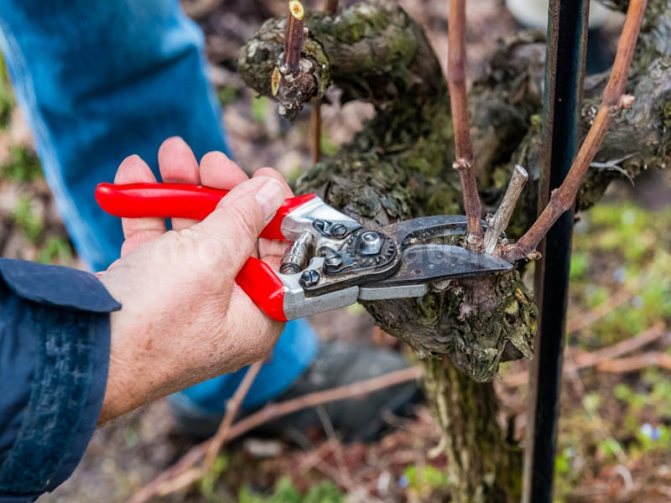

You can get acquainted with the correct pruning and the structure of grape bushes from the video.
Variety selection
The choice of the variety is of great importance. When choosing a variety, the following nuances should be considered:
- ripening time;
- wintering features;
- frost resistance;
- additional care measures,
- growing region;
- purpose;
- disease resistance.
Early varieties, most common among summer residents:
- "Kesha" is an early variety. Ripening period 105-125 days. The berries are large, oval, white, with a sweet taste. The weight of one bunch ranges from 800 grams to 1250 grams. The variety is frost-resistant.


- "Laura" is an early ripening variety. Matures in 115 days. The fruits are large, oval in shape with a sweet taste. The bunches are large, weighing from 1000 to 2000 grams.
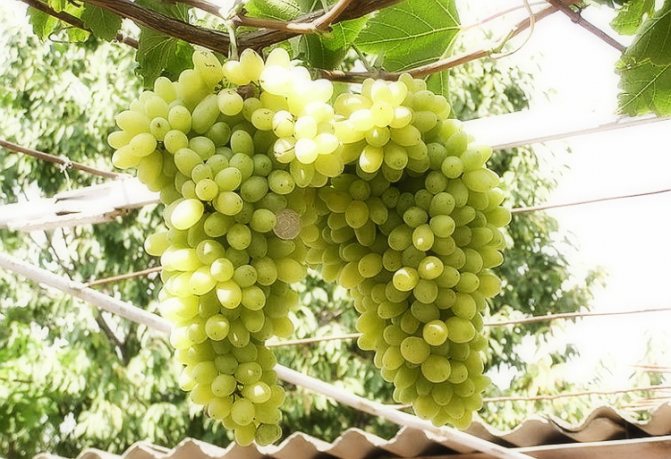

- "Kishmish 342" has no seeds. The berries are round, yellow-green in color, the taste is very sweet due to the high sugar content. A bunch weighing from 700 to 1400 grams.
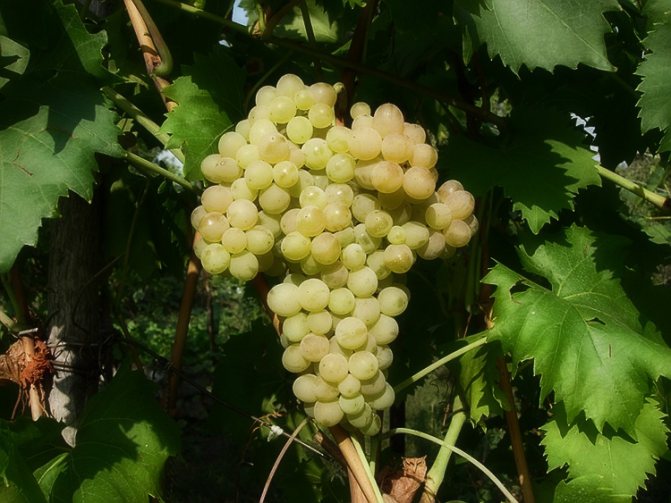

The most common medium-ripening varieties include:
- "Talisman" is a mid-season variety. Fruits are conical in shape, berries are yellow-white in color, with a characteristic aroma. The weight of one bunch is 1100-1200 grams. Aging period 130 days. Differs in high yield, and good survival rate.
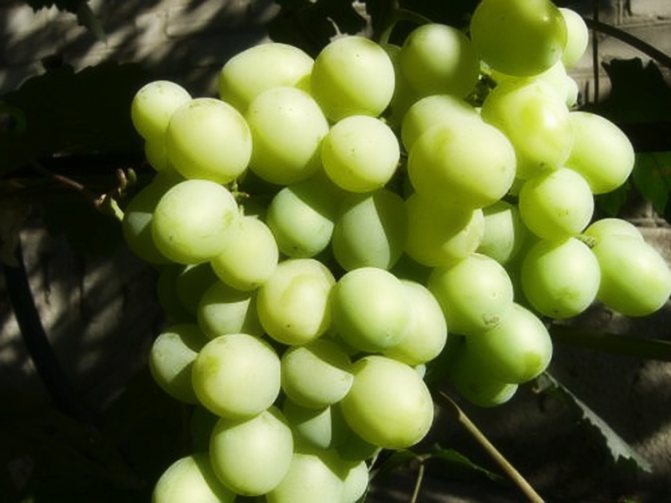

- "Original" is a medium late variety. The aging period is 140 days. Fruits are pink, oblong in shape, slightly pointed tip, sweet-sour taste. The mass of the bunch is 600-700 grams. Has good disease resistance.
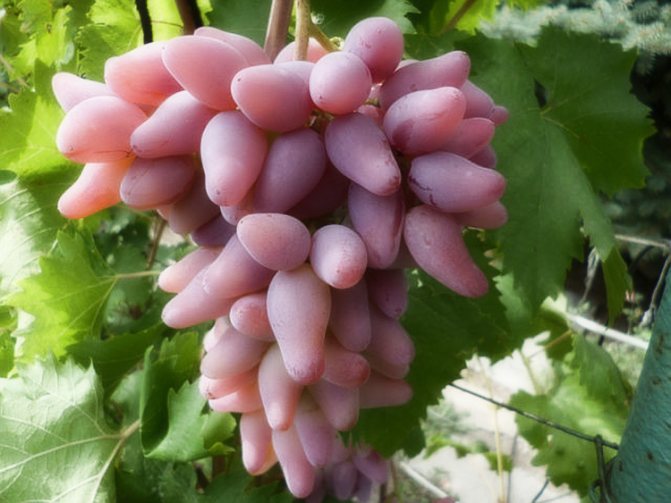

- "Lydia" is the most common grape variety among summer residents. Refers to mid-late varieties. Fruit ripening period is 150-155 days. Rounded pink berries with a slight purple tint. Has a specific aroma, taste with an admixture of strawberry notes. The bunch weighs 100-110 grams. It has a high yield and good immunity to diseases.


- "Moldova" is a late-ripening variety. Fruit ripening period 155-165 days. Berries are oval, dark purple in color. The skin is dense, rough. The taste of the fruit is sweet and sour. The bunch weight ranges from 600 to 1000 grams. Has good transportability. Storage period up to 150 days.
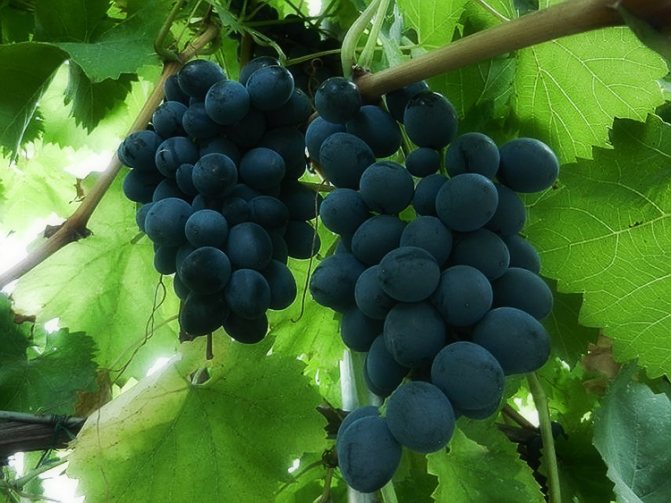

Rooting shoots
You need to start preparing grape cuttings for planting in mid or late February. They need to be carefully examined, first of all, to check the sections. If liquid oozes from them, the shoots will most likely not germinate, as well as completely dry branches. Only those cuttings with a green cut, without blackness and mold, on which moisture appears after pressing, are suitable for further germination.
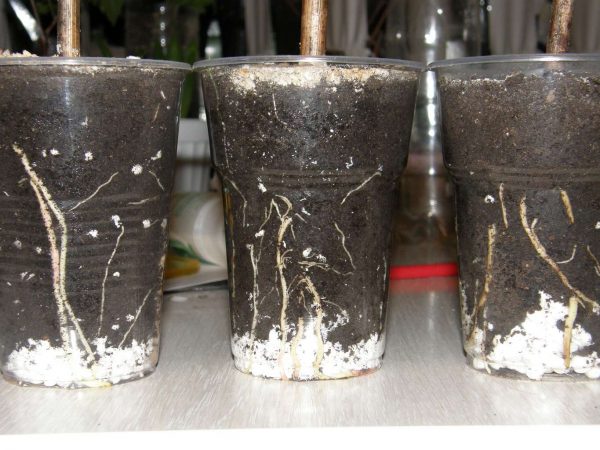

Rooted cuttings grow and develop better
To speed up the emergence of roots and the development of seedlings, they need to be rooted in one of the available ways, having previously kept them in warm water for two days, changing the water daily. You can add to it aloe juice, honey or special growth activator... Some experienced growers argue that without this procedure, the chubuki may not germinate at all, so it is not recommended to ignore it.


With the correct procedure, the roots appear after two weeks.
Table 1. Methods for rooting grape cuttings.
| Rooting method | Description |
| In the water (watering) | Put a layer of cotton wool 2 cm thick in glass jars, pour a little light pink solution of potassium permanganate or water with a slice of charcoal. Put the shanks in the container, and on top create a greenhouse effect using a plastic bag and place them so that the lower part of the can is warm, and the upper, on the contrary, is cool. At home, such a microclimate is obtained using bottles filled with water of different temperatures. The advantage of this method is that it activates the development of roots, and the formation of buds, on the contrary, slows down |
| In the soil | Pour drainage on the bottom of liter containers, lay on top a substrate of humus, clean river sand (you can replace it with perlite or vermiculite) and garden soil, previously steamed. Place the shoots in the bottom layer in the ground and water well |
| In peat tablets | Moisten the peat tablets well, place the cuttings there with the lower part, and wrap the upper part in a moist natural cloth and wrap with cellophane |
You can find out what peat tablets are and how to use them for growing seedlings and seedlings by reading a specialized article on our website.
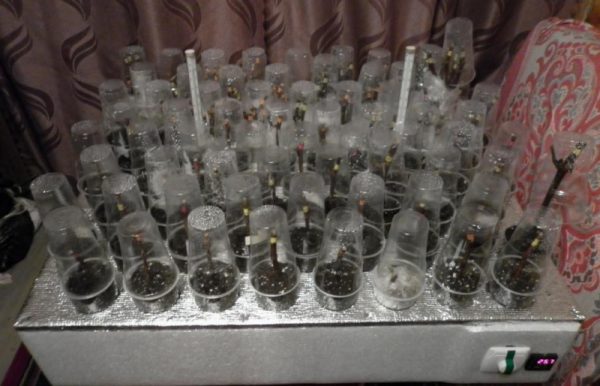

Kilchevaniye is not an easy but very effective way of rooting cuttings.
Grape cuttings should be placed in a place with good lighting and make sure that the bottom is constantly moist. After about two weeks, the shoots need to be examined - growths should appear on them, from which roots will subsequently appear. If there are no changes, the cuttings should be left for another 2, for a maximum of 3 weeks.
Attention! For growing vineyards in the middle lane, it is better to choose local varieties - some varieties of crops growing in the south are more capricious and require special conditions.
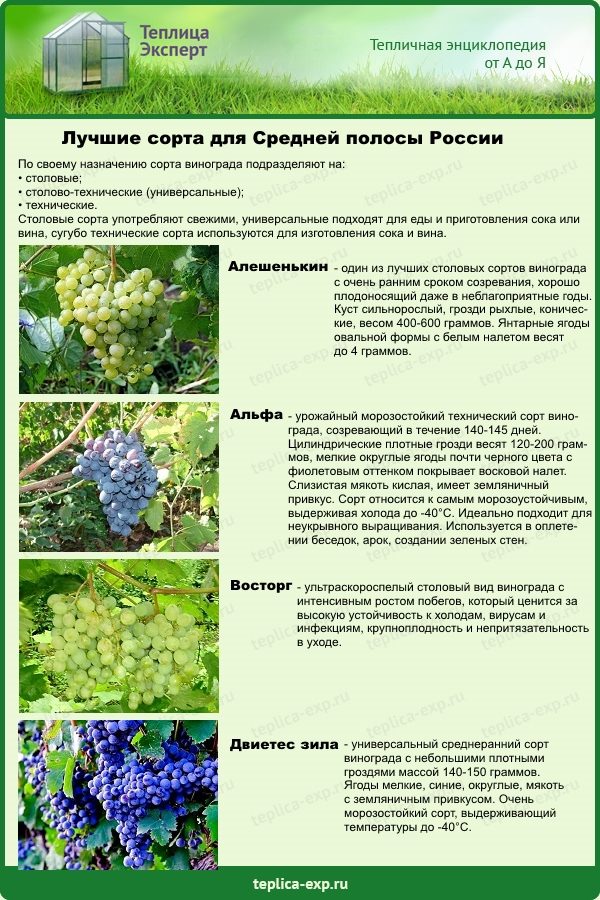

The best varieties for Central Russia

